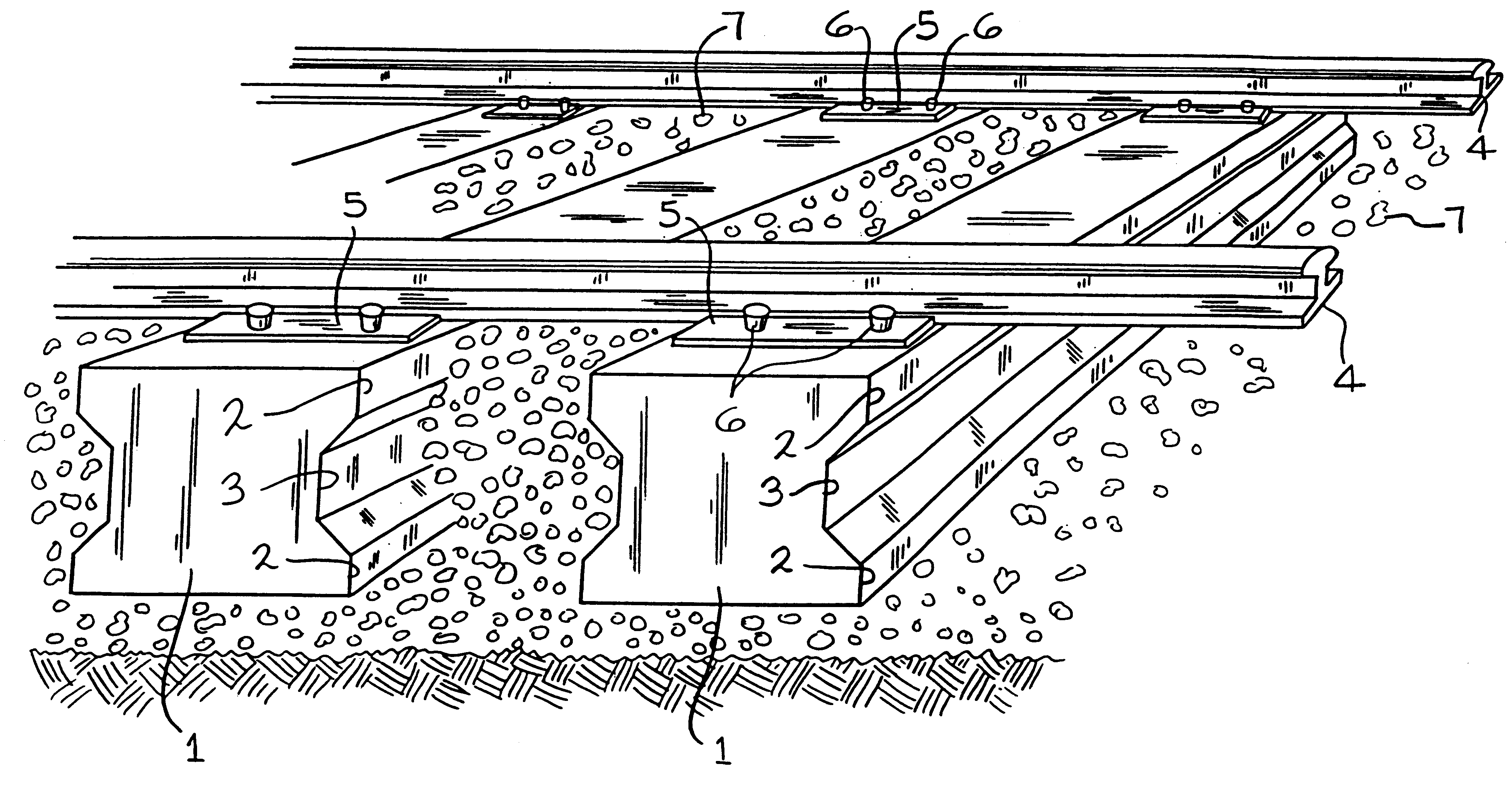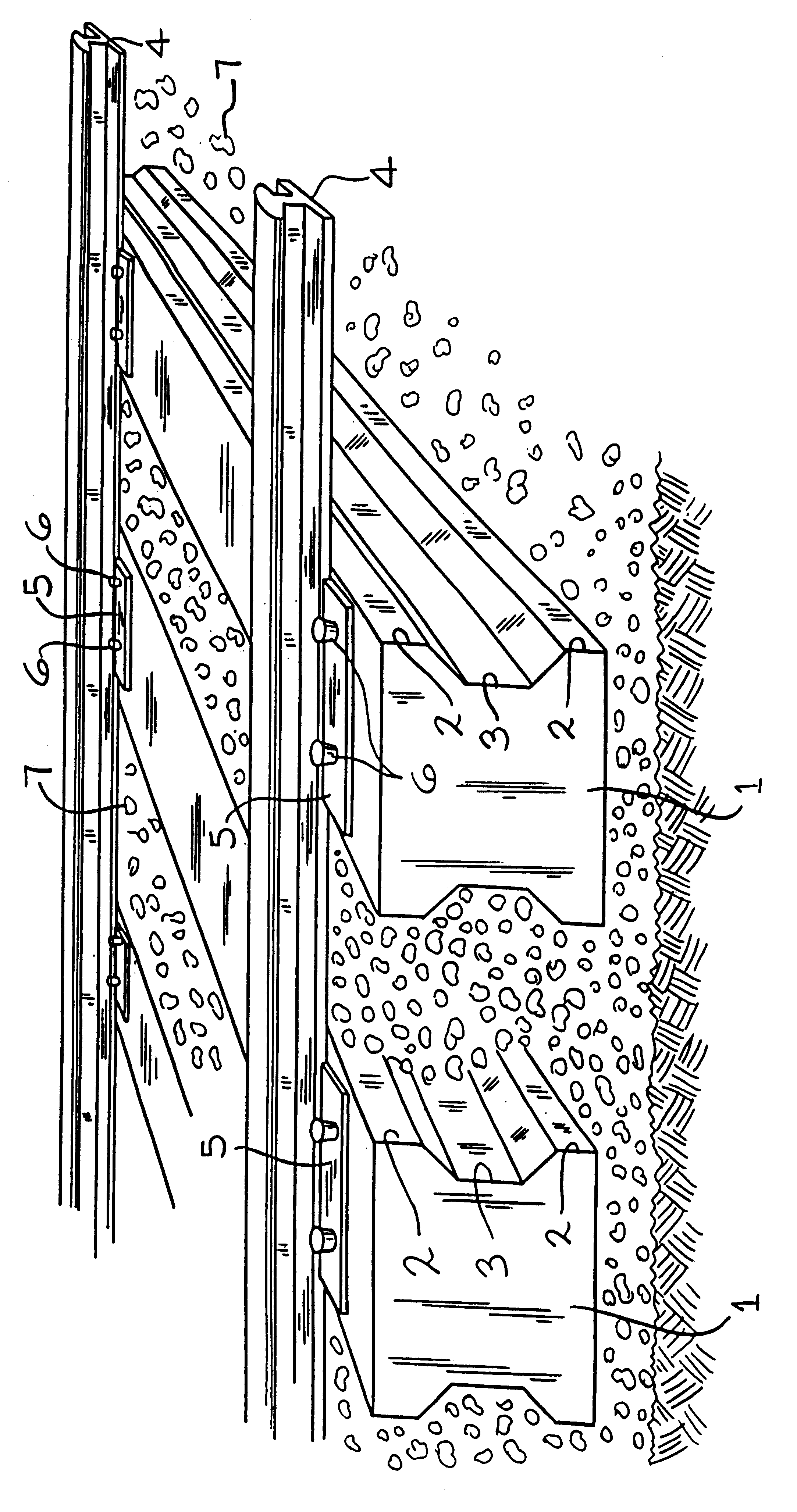Composite railway crosstie, shaped like an I beam
a crosstie and i beam technology, applied in the direction of rail fasteners, applications, roads, etc., can solve the problems of environmental pollution, deterioration of wood crosstie, and environmental protection agencies refusing to allow the burning or incineration of creosoted wood ties
- Summary
- Abstract
- Description
- Claims
- Application Information
AI Technical Summary
Benefits of technology
Problems solved by technology
Method used
Image
Examples
Embodiment Construction
Referring to the drawing, a fragmentary perspective view, there is disclosed a composite I beam shaped railway crosstie 1, with spaced apart flanges 2, and an interconnecting center web section 3.
It has been found that satisfactory results can be achieved by forming the stock for making the composite crossties from a material made of recycled post-consumer / post-industrial waste polyolefins, scrapped rubber tires, and waste glass fibers. The constituents of the composite crosstie 1, is of recycled high density polyethylene and polypropylene plastics (65%), scrapped and granulated rubber tires (20%), and screener waste glass fibers (15%).
These constituents are first mixed together, then processed through an extruder where they are heated to approximately 300.degree. F. and compounded, then forced through a suitably configured extrusion die to form an I beam shape with spaced apart flange sections 2, and an interconnecting center web section 3. As the continuous length product exits th...
PUM
| Property | Measurement | Unit |
|---|---|---|
| real time service life | aaaaa | aaaaa |
| lengths | aaaaa | aaaaa |
| width dimension | aaaaa | aaaaa |
Abstract
Description
Claims
Application Information
 Login to View More
Login to View More - R&D
- Intellectual Property
- Life Sciences
- Materials
- Tech Scout
- Unparalleled Data Quality
- Higher Quality Content
- 60% Fewer Hallucinations
Browse by: Latest US Patents, China's latest patents, Technical Efficacy Thesaurus, Application Domain, Technology Topic, Popular Technical Reports.
© 2025 PatSnap. All rights reserved.Legal|Privacy policy|Modern Slavery Act Transparency Statement|Sitemap|About US| Contact US: help@patsnap.com


